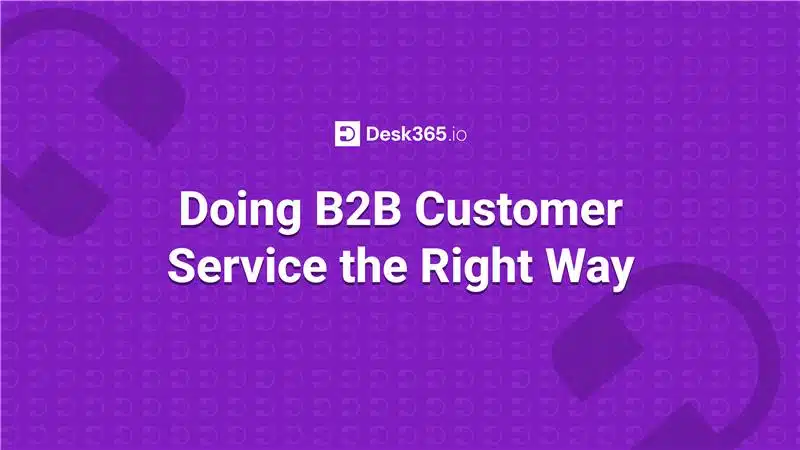If you’ve ever tried to measure how well your customer support team is doing, you probably started with the basics, like First Response Time, Resolution Time, or Ticket Volume. Those are crucial, no doubt. But they only tell part of the story.
Customer service is bigger than ticket handling. It’s about relationships, experiences, and the value your support brings to your customers and your business. That’s where customer service metrics come in, they go beyond operational efficiency and help you understand what truly drives satisfaction and loyalty.
If you haven’t yet checked it out, our earlier post on Helpdesk Metrics dives into the tactical numbers every support team should track. This article builds on that foundation and focuses on the bigger picture, the metrics that show how your service impacts customers, retention, and long-term success.
What are customer service metrics?
Customer service metrics are measurable indicators that help you understand how effectively your support team delivers value to your customers. They reveal how satisfied, loyal, and engaged your customers are, and how your support efforts influence their overall experience with your brand.
While helpdesk metrics track how your team performs, customer service metrics track how your customers feel about that performance.
In short:
Helpdesk Metrics = Internal Performance
Customer Service Metrics = Customer Experience
Both are essential. Together, they show you how efficiently your support team works and how effectively it keeps customers happy.
Why should you measure customer service metrics?
If tickets are being resolved quickly, customers must be satisfied. But that’s not always true.
You might have:
– Fast responses, but frustrated customers
– A growing ticket backlog and declining loyalty
– High CSAT scores but increasing churn
Tracking customer service metrics helps you uncover these hidden patterns. Here’s why they’re so valuable:
1. They link support to business goals
Your customer service performance directly impacts retention, upselling, and brand reputation. These metrics help you connect the dots between support and business growth.
2. They highlight experience gaps
Metrics like Customer Effort Score (CES) or Net Promoter Score (NPS) show whether customers actually enjoy interacting with your team, not just whether they got an answer.
3. They keep teams focused on customer outcomes
Customer service metrics encourage a shift from “How many tickets did we close?” to “Did we make it easy for customers to get help?”
8 essential customer service metrics to track
Here’s a breakdown of the key metrics that go beyond ticket handling, ones that truly reflect the health of your customer relationships. Let’s unpack the most important ones:
1. Customer retention rate (CRR)
2. Customer churn rate
3. Customer lifetime value (CLV)
4. Customer effort score
5. Net promoter score
6. Self-service success rate
7. Quality assurance score
8. Customer satisfaction score
1. Customer retention rate (CRR)
Your retention rate shows how many customers continue doing business with you over a specific period. Think of it as the opposite of churn; instead of asking “Who left?”, it answers “Who stayed?”
Retaining existing customers is always more cost-effective than acquiring new ones. A high CRR shows that customers find ongoing value in your product and service, and that your support team is building trust and loyalty.
Retention Rate = Customers at End of Period − New Customers / Customers at Start of Period ×100
Let’s consider an example: let’s say you started the quarter with 500 customers, gained 50 new ones, and ended with 520; your retention rate will be:
(520−50) / 500 * 100 = 94%
That means 94% of your customers stuck around, a strong indicator of satisfaction and long-term engagement.
Tips to improve:
✅ Follow up with customers after resolving issues.
✅ Use surveys to understand why customers stay (and why they leave).
✅ Focus on proactive support, not just reactive fixes.
2. Customer churn rate
If retention tells you how well you’re keeping customers, churn tells you where you might be losing them. It’s the percentage of customers who stop using your product or service during a given timeframe.
Even a small increase in churn can have a big impact on revenue and growth. Tracking churn helps you spot early warning signs, like poor onboarding, complex interfaces, or slow customer service.
Churn Rate = Customers Lost During Period / Total Customers at Start of Period ×100
Let’s say if 25 customers leave out of 500 in a quarter, your churn rate is 5%.
25 / 500 * 100 = 5
A rising churn rate may mean customers aren’t finding enough value, or they’re frustrated by certain experiences.
Tips to improve:
✅ Offer personalized onboarding and proactive check-ins.
✅ Identify “at-risk” customers (low activity, low satisfaction).
✅ Create win-back campaigns or feedback loops to re-engage with them.
3. Customer lifetime value (CLV)
CLV tells you how much total revenue a single customer brings to your business over their entire relationship with you.
It helps you understand the long-term value of your customer relationships and justifies investments in support, retention, and customer experience.
CLV = Average Purchase Value × Purchases per Year × Customer Lifespan (Years)
Let’s say your average customer spends $100/month and stays for 3 years.
Your CLV = $100 × 12 × 3 = $3,600.
Higher CLV = Happier customers. It means your service is strong enough to keep them loyal for years, not just months.
Tips to improve:
✅ Provide consistent, high-quality customer support.
✅ Encourage renewals or upgrades through exceptional service.
✅ Build loyalty programs or personalized communication for long-term users.
4. Customer effort score (CES)
CES measures how easy it was for a customer to get their issue resolved — basically, how much effort they had to put in to get help.
In customer service, ease often beats delight. Research shows customers are far more likely to stay loyal to brands that make problem-solving simple and friction-free.
You can measure it by asking customers right after an interaction — “How easy was it to get your issue resolved?” (rated on a 1–7 scale, where 1 = very difficult and 7 = very easy).
If customers consistently rate your support as “easy” or “very easy,” your CES is high, and that usually correlates with strong satisfaction and retention.
Tips to improve it:
✅ Simplify your support workflows and reduce back-and-forth.
✅ Empower agents with the right tools and knowledge.
✅ Strengthen your self-service options so customers can find answers quickly.
5. Net promoter score (NPS)
NPS tells you how likely your customers are to recommend your company to others. It is one of the clearest signs of loyalty.
Customers rate you on a scale of 0 to 10 in response to a question like:
“How likely are you to recommend us to a friend or colleague?”
Promoters are those who rank you 9 or 10. They love your brand and spread the word.
Passives rank you 7 or 8. They are satisfied but not enthusiastic.
Detractors are those who rank you between 0 to 6. They are unhappy and might discourage others.
NPS = % Promoters – % Detractors
A high NPS signals strong customer advocacy which means your users aren’t just happy; they’re actively recommending you.
Tips to improve it:
✅ Follow up with detractors to understand their pain points.
✅ Celebrate promoters and ask for testimonials.
✅ Use NPS feedback to guide product and service improvements.
6. Self-service success rate
This metric tracks how effectively customers resolve their issues using your Knowledge Base, FAQs, or in-app help, without needing to contact your team.
Modern customers prefer finding answers themselves. A high self-service success rate means your support content is well-organized, searchable, and genuinely helpful. It also reduces ticket volume and frees agents to handle complex issues.
Self-Service Success Rate = Total Self-Service Resolutions / Total Help Requests × 100
Tips to improve it:
✅ Identify top search queries and make sure they lead to relevant articles.
✅ Update your help center regularly based on ticket trends.
✅ Add visuals, short videos, or FAQs for clarity.
7. Quality assurance (QA) score
QA Score measures the quality of interactions between your agents and customers. It’s an internal metric that helps you understand how well agents communicate, empathize, and resolve issues, beyond speed.
A ticket resolved in two minutes, but without empathy, might leave a customer frustrated. QA helps you evaluate both the accuracy and tone of your support.
Score them on parameters like:
- Correctness of information
- Clarity and tone
- Adherence to process
- Empathy and professionalism
Tips to improve:
✅ Offer regular coaching sessions and feedback loops.
✅ Celebrate agents who consistently score high on empathy.
✅ Review tickets with low satisfaction scores for learning opportunities.
8. Customer satisfaction score (CSAT)
CSAT is one of the simplest and most direct ways to measure how happy customers are with your service.
After an interaction, simply ask:
“How satisfied are you with the support you received?”
Customers typically rate this on a 1–5 or 1–7 scale. It gives you immediate feedback on whether your team met or fell short of expectations. When tracked over time, CSAT can help identify patterns in satisfaction across agents, teams, or issue types.
Let’s say if 85 out of 100 customers rate your service as “satisfied” or “very satisfied,” your CSAT is 85%.
Tips to improve it:
✅ Personalize your responses, avoid copy-paste replies.
✅ Close the feedback loop with follow-up communication.
✅ Use CSAT trends to train your team and refine workflows.
While each of these metrics offers unique insights, the real power comes when you look at them together.
- If CSAT drops but CES stays high, maybe customers are happy with ease but not with outcomes.
- If NPS rises while QA scores improve, your empathy training might be paying off.
- A low Self-Service Success Rate could explain a high Ticket Volume from your helpdesk data.
That’s why combining customer service metrics with your existing helpdesk metrics, like those we covered here
gives you a 360° view of your customer experience, both behind the scenes and at the front line.
If you ever get lost in the alphabet soup of FRTs, SLAs, or CES, our Desk365 Glossary is a great quick reference.
Learn the language of customer service
Great customer service isn’t about how many tickets you close, it’s about how your customers feel when you close them.
Tracking both helpdesk and customer service metrics helps you balance speed with satisfaction, efficiency with empathy, and numbers with relationships.
Start small: pick two or three metrics to focus on this quarter. As you improve those, layer in more over time.
Because when you measure what truly matters, you’ll not only see happier customers, you’ll build a stronger, smarter support organization.







